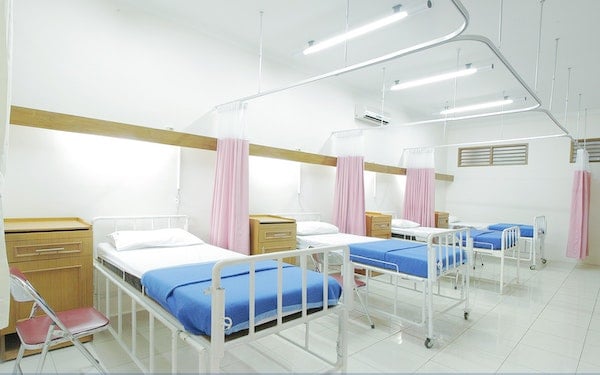Published on
Surviving the Shortage: How Institutions Can Best Serve Healthcare Workers

Healthcare workers are facing a shortage crisis in both the workforce and in the classroom. There’s a lack of recognition for the people who protect and serve us all. But how can institutions deliver the best learner experience to those who want to pursue this field? More importantly, what can be done in the workforce to provide sustainable careers? Van Ton-Quinlivan discuss the impact of this shortage and what institutions can start doing to fill these demanding and critical needs.
The EvoLLLution (Evo): What is the healthcare worker shortage?
Van Ton Quinlivan (VTQ): We know that the country is graying and growing. Especially when we gray, we have increased healthcare needs. As a result, we need more healthcare workers, not just doctors but also allied health workers.
What’s allied health? If you imagine getting in a car accident, everyone who touches you–from the first responder emergency medical technician, to the receptionist who checks you into the hospital, to the nurse who takes your vitals and scans, until you are checked out. All these folks (minus doctors and administrators) are allied health workers, equipped with credentials that add up to more than a high school diploma but less than a four-year degree postsecondary degree. These occupations tend to be “hidden” away from family discussions at the dinner table. California alone needs roughly 500,000 allied health workers through 2024. When you’re talking about numbers that high, it implies a structural issue that no one organization can solve on its own.
Evo: What impact does this skills gap have on access to healthcare and health resources across California?
VTQ: No one wants to draw the short straw and not have healthcare workers in their backyard. So, when we think about those affected the most, we find that disproportionately low-income communities and rural areas are struggling with the talent puddle. Part of the workforce development strategy has to be growing workers from those communities who want to live and serve there.
Evo: How does healthcare access play a role in delivering public expectations?
VTQ: Interestingly enough, Kaiser Permanente has a very large community-benefit footprint. They invest in mental health, food security, and housing in addition to more traditional charitable healthcare and donations. What they’ve come to realize is that it all comes back to a good paying job. People’s ability to hold good jobs actually negates or eliminates a lot of poor health symptoms. Not only does improving this skills gap create more access to healthcare, but by creating skills-gap-closing opportunities, you’re reducing the burden on the public health system.
Evo: What role do healthcare-industry employers need to play to bridge this skills gap?
VTQ: First, we’re going to need to work together to bring awareness to these careers and occupations . Around the dinner table, families often talk about nurses and doctors as they would about lawyers and athletes. It’s know about let alone discuss professions such as radiology technicians, surgical technicians or medical assistants. We’re going to have to work together to spread the word within communities and raise visibility for these jobs.
Next, education has to reflect the current needs of local populations. For example, 28% of Californians say that their first language is Spanish, so if we want a healthcare workforce reflective of its community, then we need to source Spanish speakers, including those who may need some help with their English. Futuro Health will shortly be rolling out an English for Allied Health program and working with the SEIU-United Health Workers to source candidates.
Another dimension of the work is to have students practice their “people” or “soft” skills. Employers complain that graduates are not day-one ready, and the especially critical human touch is lacking in their work. We know that Futuro Health will need to double down on these skills and perhaps offer students more practice to grasp them.
The hardest nut to crack is the lack of clinical seats, whereby students can practice on live patients. The practice is not optional but required for medical licensure. Across California, a lack of open clinical slots is constraining higher education’s ability to produce more workers. One college said they could triple their production but won’t do so unless they can be assured that enough clinical slots exist for their students. This dilemma is too much of a burden for one employer to carry alone, but mybe we can solve it on a regional scale. Maybe a consortium of employers coming together can make it easier for each to offer clinical slots.
Evo: What role can colleges play in supporting the upscaling and rescaling effort of professionals in the industry?
VTQ: In addition to making sure coursework and credentials are stackable, I think the other thing we have to recognize is how student debt is preventing students from moving toward their desired career. Healthcare is credential-intensive, and if you’re overburdened with debt just to get in the door, how can you even think about getting the next course, certificate or degree that will allow you to move into more advanced occupations?
Evo: Is there a government role in creating financial incentives or financial barrier-reducing policies that create some capacity for people to be able to use financial aid or scholarships to access these programs?
VTQ: We definitely need traditional financial aid tools, but, this is also a good time to experiment with non-traditional financing tools, too. Corporate tuition disbursement policies are really good for individuals who don’t have to front the tuition. For many adults, the cash flow is a real issue. Apprenticeships can be a good option for them because they acquire career-relevant experience while getting a paycheck in return. There are also creative financial alternatives – for example, the ability to pay as you go with a fixed or monthly fee. There have also been experiments where repayment is triggered and tied to a minimum income.
All in all, I think we just need a lot more experimentation. Our economy is one wherein education is no longer a one-time inoculation but really a set of booster shots throughout your life. That fact is particularly true in the healthcare sector. You have to wonder who will pay for those booster shots because a lot of our financial aid is structured for that one-time inoculation up front. And if you’re jumping to the conclusion that employers should pay, don’t forget the we’re only with our employers for four and a half years on average, according to the Department of Labor.
Evo: Is there anything you’d like to add about how colleges can start to evolve, making sure they’re able to meet the shifting labor market and workforce needs of the allied health industry?
VTQ: Well, there’s acute need for nurses and there are colleges that specialize in that career. If any of your readers happen to attend one and want to work with Futuro Health (futurohealth.org) to stair step allied workers into nurses, please reach out to us at info@futurohealth.org.
This interview has been edited for length and clarity.



